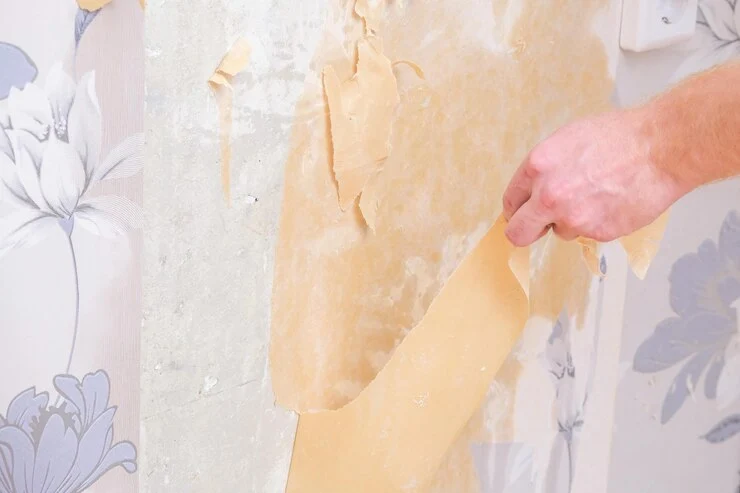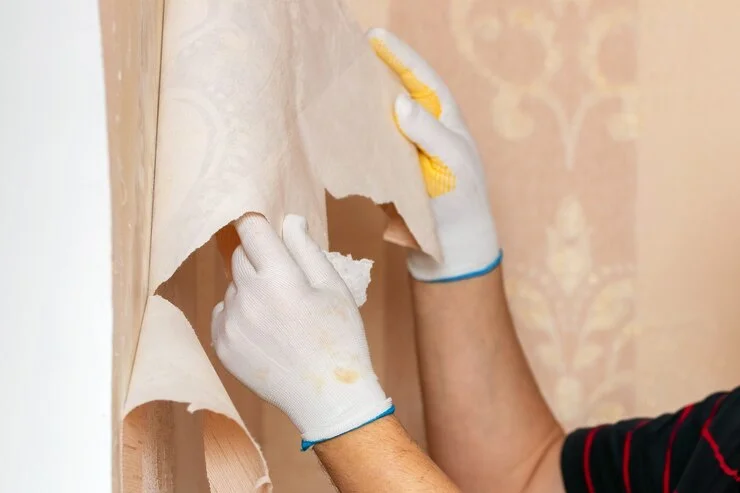Peel and stick wallpaper is a great way to transform any space. It offers a temporary and stylish option for wall decoration. When it’s time to remove it, many people feel unsure. They wonder how to do it without damaging their walls. In this guide, we will walk you through everything about removing peel and stick wallpaper. The process will be easy and effective.
What Is Peel and Stick Wallpaper?
Peel and stick wallpaper is also called self-adhesive wallpaper. It is a removable wall covering with a pressure-sensitive adhesive backing. Traditional wallpaper requires paste, but peel and stick wallpaper does not. It is easy to install and remove. This makes it popular among renters and DIY enthusiasts. However, many people question,
Does peel and stick wallpaper damage walls?
The good news is that when applied and removed correctly, it typically does not cause any damage. The adhesive is strong enough to stick. However, it is gentle enough to peel away. It won’t leave marks or residue.
Why Remove Peel and Stick Wallpaper?
There are several reasons why you might need to remove peel and stick wallpaper, such as:
- Updating your decor: Trends and personal preferences change over time. You may want a fresh new look.
- Preparing to move: Renters often need to restore walls. This is required before leaving a property.
- Repairing walls: If the wallpaper is damaged or torn, it may need to be removed. Peeling edges also indicate it’s time for maintenance.
Additionally, some people worry about,
Does peel and stick wallpaper leave residue when removed?
High-quality peel and stick wallpapers leave little to no residue. However, improper removal techniques can leave adhesive on the walls. This is why following the proper removal steps is crucial.
Tools You’ll Need for the Job
Before diving into the removal process, gather the following tools and materials:
- Plastic scraper or putty knife: For gently lifting the wallpaper without scratching the wall.
- Hairdryer or heat gun: To soften the adhesive and make peeling easier.
- Spray bottle filled with water: For loosening stubborn adhesive spots.
- Mild dish soap or wallpaper remover solution: To help clean any adhesive residue.
- Microfiber cloth or sponge: For wiping down the walls after removal.
- Bucket of warm water: For rinsing and cleaning during the process.
- Painter’s tape (optional): To protect adjacent areas or surfaces.
- Stepladder: If you’re working on high walls or ceilings.
Having these tools ready will make the process smoother and less stressful.
Step-by-Step Guide to Removing Peel and Stick Wallpaper
Step 1. Test a Small Area
Before committing to removing all the wallpaper, test a small section to see how easily it comes off. Start at a corner or seam and gently peel back the wallpaper. If it resists, you may need to use heat or moisture to loosen the adhesive.
This step also answers a common concern:
What is the downside of peel and stick wallpaper?
One potential downside is that lower-quality versions may tear during removal or leave residue behind. Testing helps address these issues before they escalate.
Step 2. Loosen the Adhesive with Heat
Heat is a powerful ally when removing peel and stick wallpaper. Use a hairdryer or heat gun to warm the adhesive as you work. Hold the heat source about 6 inches away from the wall and move it in a circular motion for 15-20 seconds. This softens the adhesive, making it easier to peel the wallpaper off.
Step 3. Start Peeling the Wallpaper
Once the adhesive is warm, begin peeling the wallpaper slowly. Start at the top corner and pull downward at a 45-degree angle. Pulling at this angle reduces the risk of tearing the wallpaper. It also helps prevent damaging the paint underneath. If you encounter resistance, reapply heat or move on to the next step.
Step 4. Use Moisture for Stubborn Spots
For particularly stubborn areas, spray the wallpaper with a mixture of warm water and mild dish soap. Let it sit for a few minutes to penetrate the adhesive. Then, use a plastic scraper or putty knife to gently lift the edges and continue peeling.
At this point, you might wonder, “Does peel and stick tile come off easily?” Similar to wallpaper, peel and stick tiles can be removed with a combination of heat and moisture. However, tiles tend to have stronger adhesive and may require more effort during removal.
Step 5. Clean the Walls
After removing the wallpaper, you’ll likely notice adhesive residue on the walls. Use a microfiber cloth or sponge with warm soapy water to clean the surface thoroughly. For tough adhesive spots, a commercial wallpaper remover solution can help. Wipe down the walls gently and allow them to air dry.
Step 6. Inspect and Repair the Walls
Once the walls are clean and dry, inspect them for any damage or imperfections. Use spackling paste to fill in holes or cracks, then sand the area smooth. This ensures a flawless surface for repainting or re-wallpapering.

Tips for Removing Peel and Stick Wallpaper Without Damage
- Work in small sections: Tackling one area at a time makes the process easier. It also reduces the risk of errors.
- Use a gentle touch: Avoid excessive force when peeling or scraping to protect the wall.
- Choose the right tools: Use plastic scrapers instead of metal ones. This prevents scratches.
- Keep the adhesive warm: Consistent heat application ensures the adhesive remains pliable.
- Be patient: Removing wallpaper can take time, especially for larger or older installations.
Common Mistakes to Avoid
- Rushing the process: Removing wallpaper too quickly can cause torn pieces. It can also leave leftover adhesive.
- Skipping the test patch: Test a small area first. This helps you find the best removal method for your wallpaper type.
- Using harsh chemicals: Stick to mild solutions to avoid damaging the paint or drywall.
- Not cleaning the walls properly: Failing to remove adhesive residue can cause issues. It may affect future wall treatments.
When to Call a Professional?
Most people can remove peel and stick wallpaper on their own. However, there are times when professional help may be needed.
- Large wall surfaces: Removing wallpaper from extensive areas can be time-consuming and labor-intensive.
- Delicate wall finishes: If your walls have custom textures or finishes, professional help can preserve them.
- Persistent adhesive residue: A professional can use specialized tools. They will also use solutions to ensure a pristine finish.
Conclusion
Removing peel and stick wallpaper doesn’t have to be a daunting task. With the right tools and methods, you can fix your walls. A bit of patience will help you do this without causing damage. Whether you’re redecorating, moving, or refreshing your space, these steps will help. They will ensure a hassle-free experience. Now that you know how to tackle the process, you’re ready. Say goodbye to the old wallpaper and welcome a fresh look to your home!
